Day 53 - Avignon & Palais des Papes
/Wanting to explore places outside of Nimes, we decided to head to Avignon. We did not want to drive too far, since we have a 5-6 day road trip coming up on Sunday, so with Avignon being only about a 30-40 minute drive from Nimes it was a perfect destination. With the sun shining in the blue sky and some white fluffy clouds scattered about it was a gorgeous day for a drive.
We arrived around 1:30 PM and decided to eat our packed lunch in the car, since in the afternoon you are only required to pay for parking from 2-7 PM. After the other day, when we paid unnecessarily for parking, we were rather proud of our plan.
It is pretty neat that you park right next to the wall that one day protected the city of Avignon.
Car Park next to the ramparts of Avignon
“The ramparts of Avignon 4735 yards long, surrounds the old pontifical city. Construction was started in 1355 under Pope Innocent VI to replace the old walls which were too small to protect the town from the frequent menace of mercenary bands and the Grandes Compagnies. Finished under Urbain V, they enclosed an area of 373 acres, making Avignon, after Paris, the largest town in France of the time.””
We walked through some charming streets on our way to Palais des Popes (Palace of the Popes).
Charming streets of Avignon
We passed by quite a few small shops that mostly sold local products of the region.

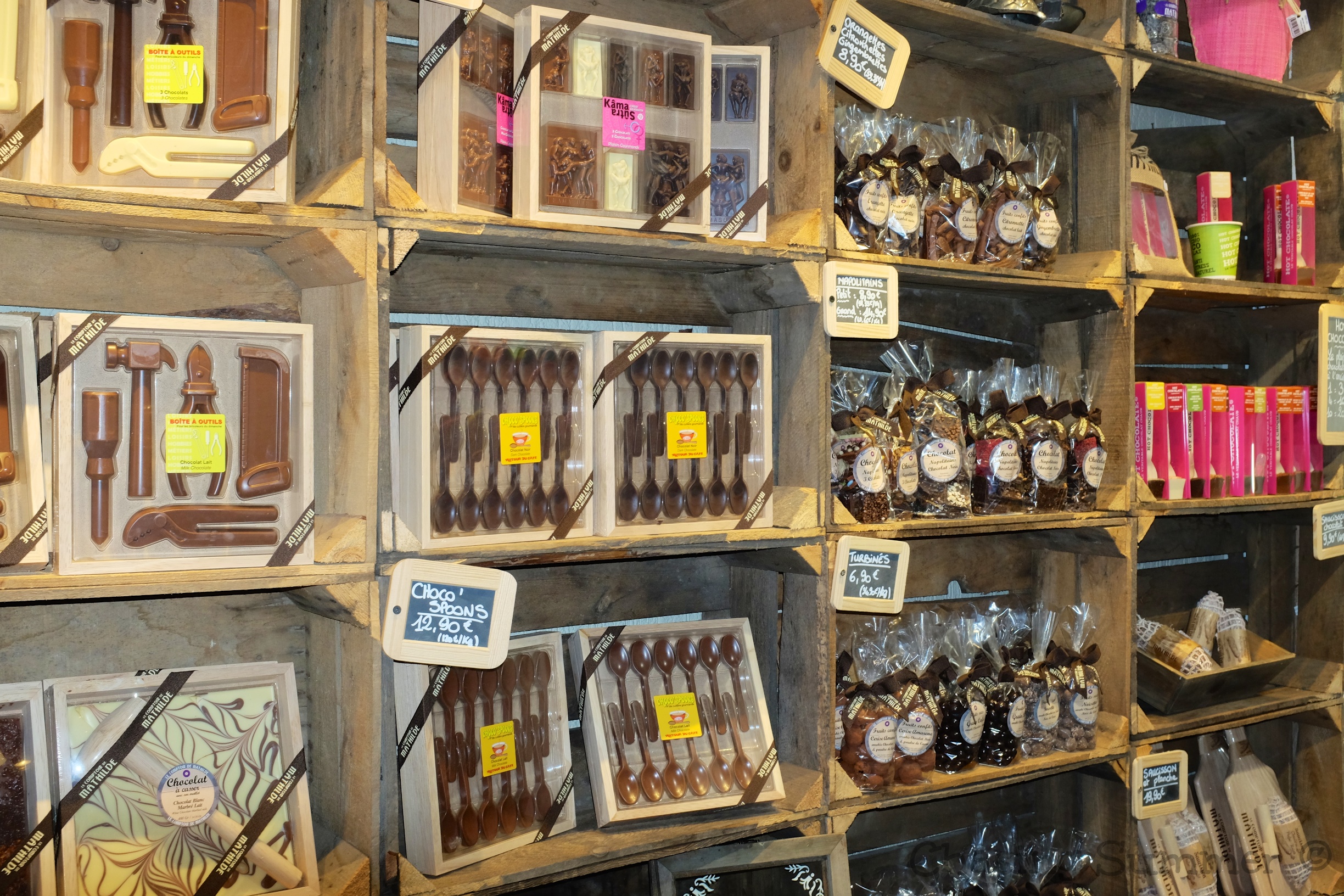
After zig zagging through a few streets, we arrived at our destination and were awed at the architectural beauty of Palais des Papes.
Palais des Papes - Avignon
“The Palais construction began in AD 1252. Avignon became the residence of the Popes in 1309, when the Gascon Bertrand de Goth, as Pope Clement V, unwilling to face the violent chaos of Rome after his election (1305), moved the Papal Curia to Avignon, a period known as the Avignon Papacy.
The Palais des Papes is one of the largest and most important medieval Gothic buildings in Europe. One time fortress and palace, the papal residence was the seat of Western Christianity during the 14th century. Six papal conclaves were held in the Palais.”



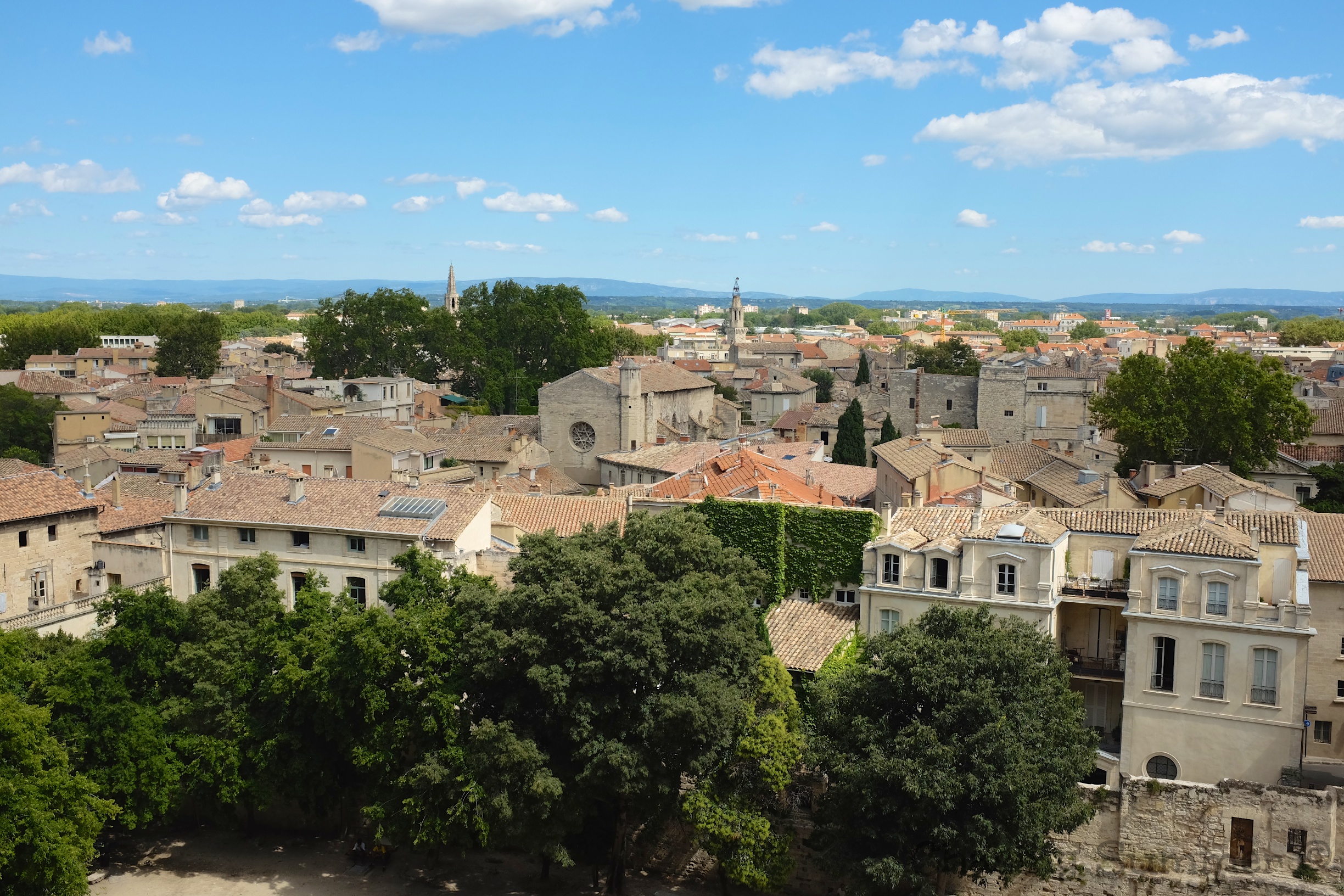
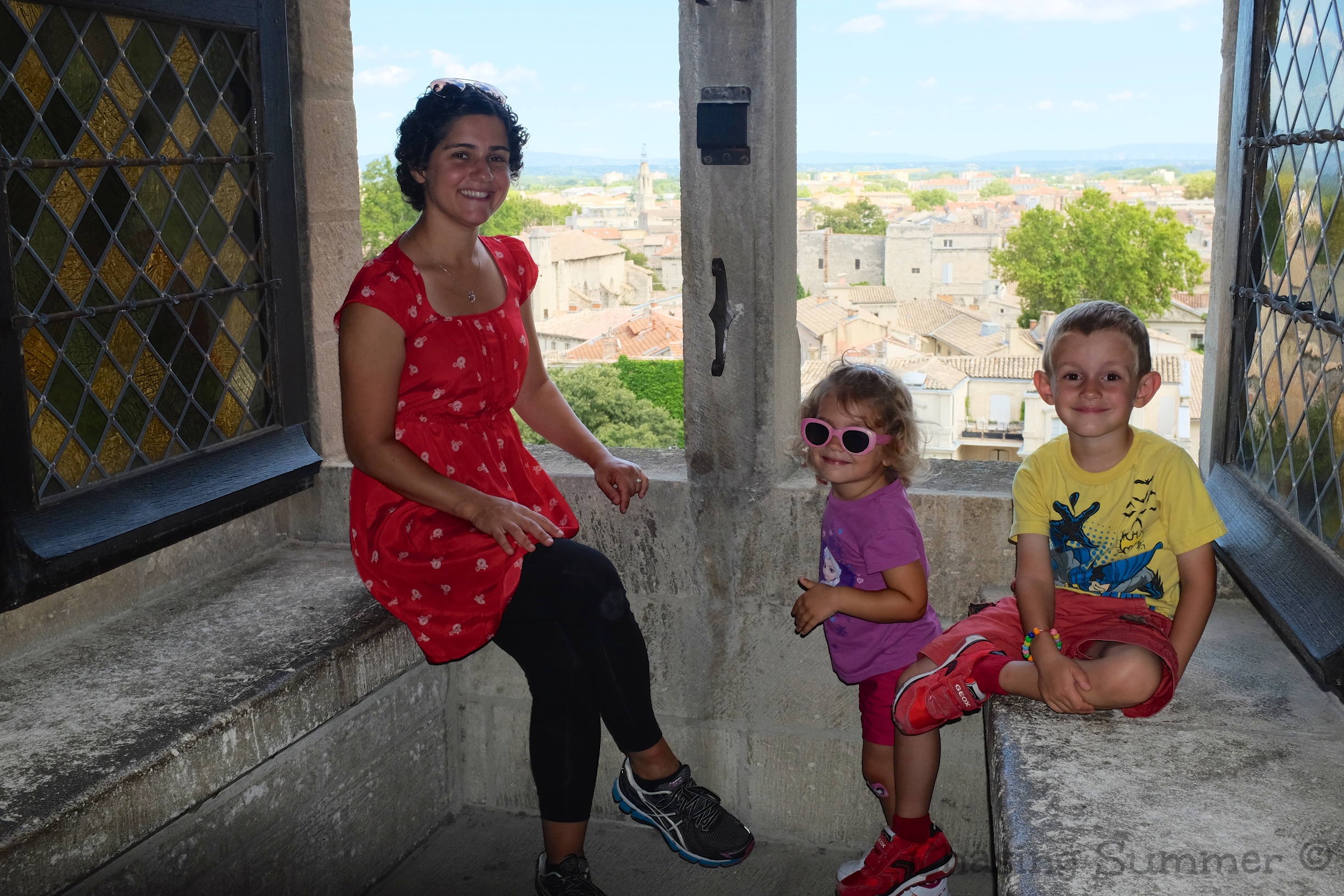

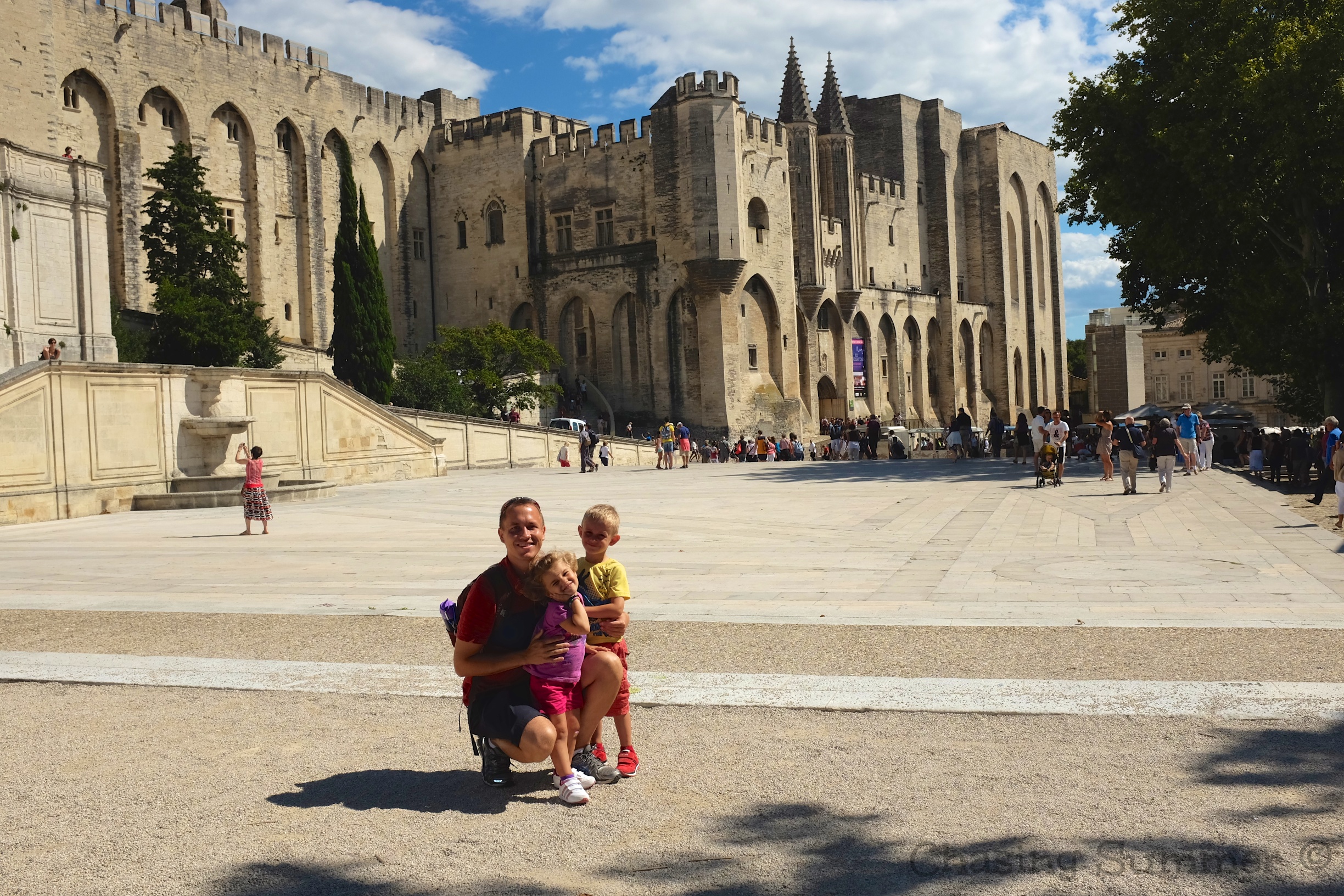
A brief note regarding Saint John's Chapel (1st picture in the above gallery) that I found interesting.
“Located immediately below the Saint Martial Chapel, the Saint John Chapel is the oratory of the Consistory. It is so-named because its walls and vault are decorated with frescoes recounting the lives of Saint John the Baptist and Saint John the Evangelist. Painted by Matteo Giovannetti and his assistants between 1346 and 1348, they represent a subject widely depicted at the time, notably in the Papal Archbasilica of Saint John Lateran in Rome. By explicitly refrring to this model, Giovannetti was symbolically and politically establishing Avignon as the “New Rome”.”
After our walk throughout the Palais, we headed towards Pont Saint-Bénézet, which is also known as Pont d'Avignon. The bridge at one point, spanned the Rhone River between Villeneuve-lès-Avignon and Avignon, but nowadays ends abruptly in the middle of the river.
We were able to walk on the remaining part of the bridge that is still standing today and enjoy beautiful views of the river.
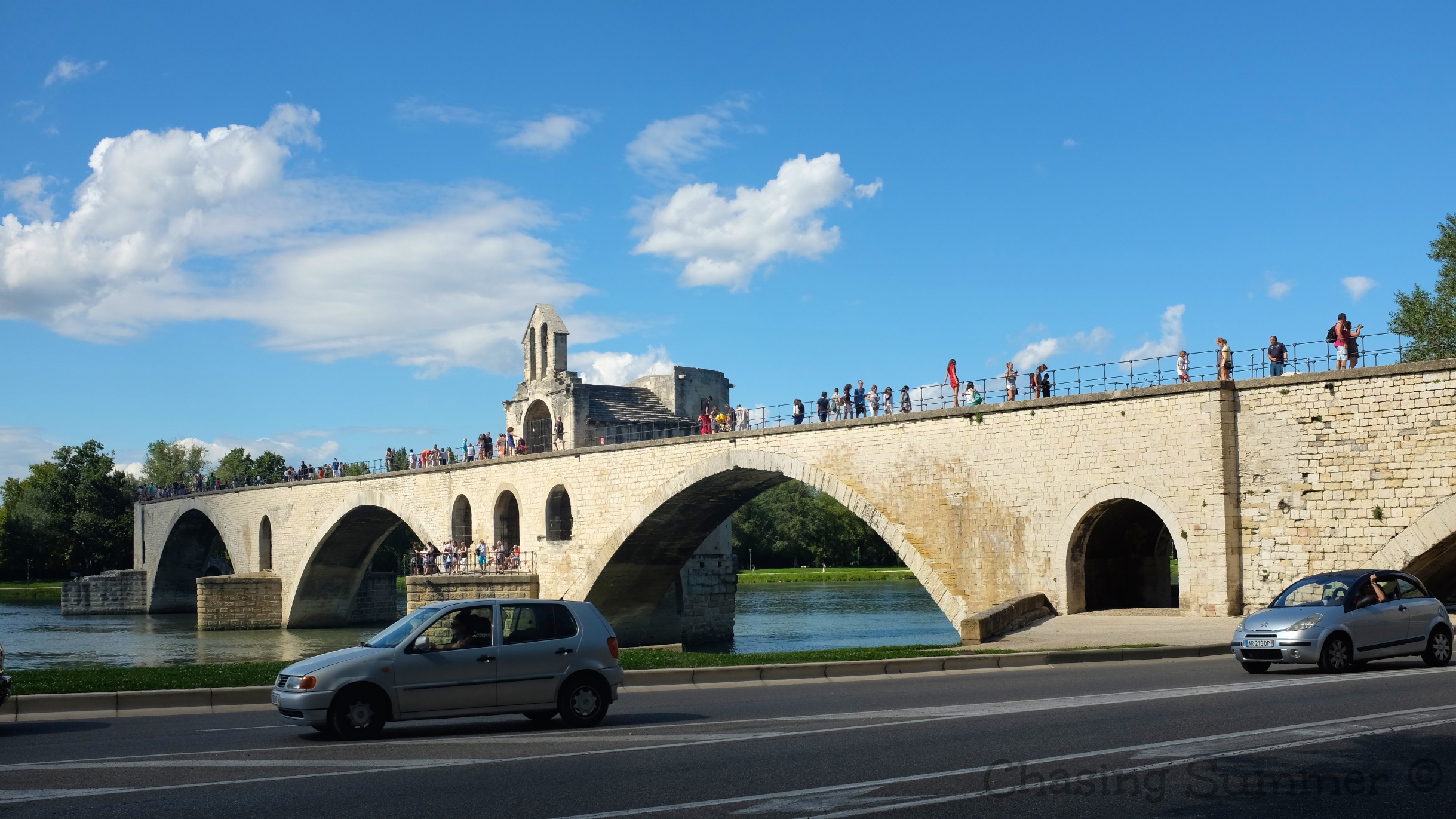
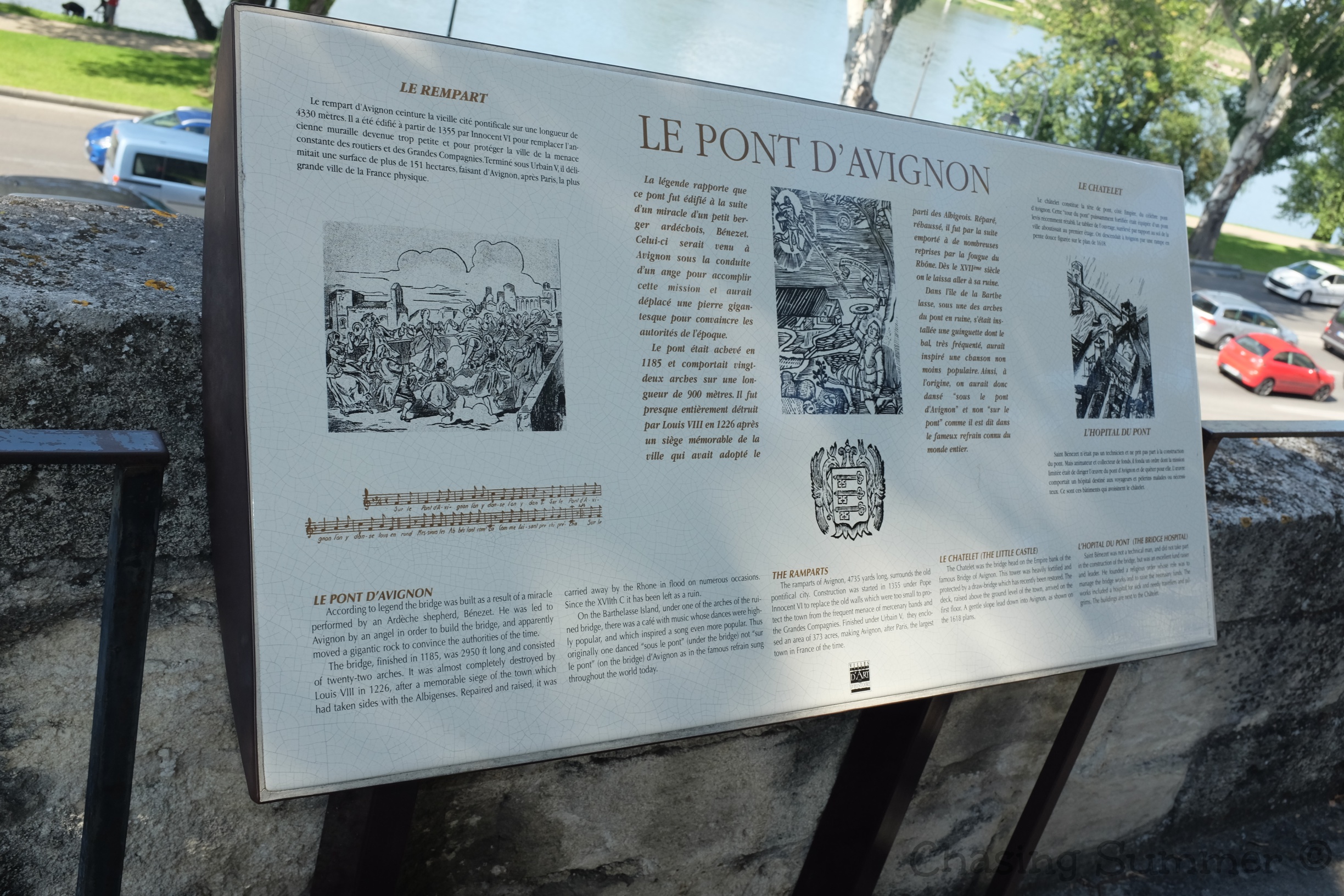
“According to legend the bridge was built as a result of a miracle performed by an Ardeche shepherd, Benezet. He was led to Avignon by an angel in order to build the bridge, and apparently moved a gigantic rock to convince the authorities of the time. The bridge, finished in 1185, was 2950 ft long and consisted of twenty-two arches. It was almost completely destroyed by Louis VIII in 1226, after a memorable siege of the town which had taken sides with the Albigenses. Repaired and raised, it was carried away by the Rhone in flood on numerous occasions. Since the XVIIth C it has been left as a ruin.
On the Barthelasse Island, under one of the arches of the ruined bridge, there was a cafe with music whose dances were highly popular, and which inspired a song even more popular. Thus originally one danced “sous le pont” (under the bridge) not “sur le pont” (on the bridge) d’Avignon as in the famous refrain sung throughout the world today. ”
We also were able to climb the tower, and on portions of the wall (via stairs), to get to a great look out point/park where we could see better views of the bridge and rooftops of Avignon.
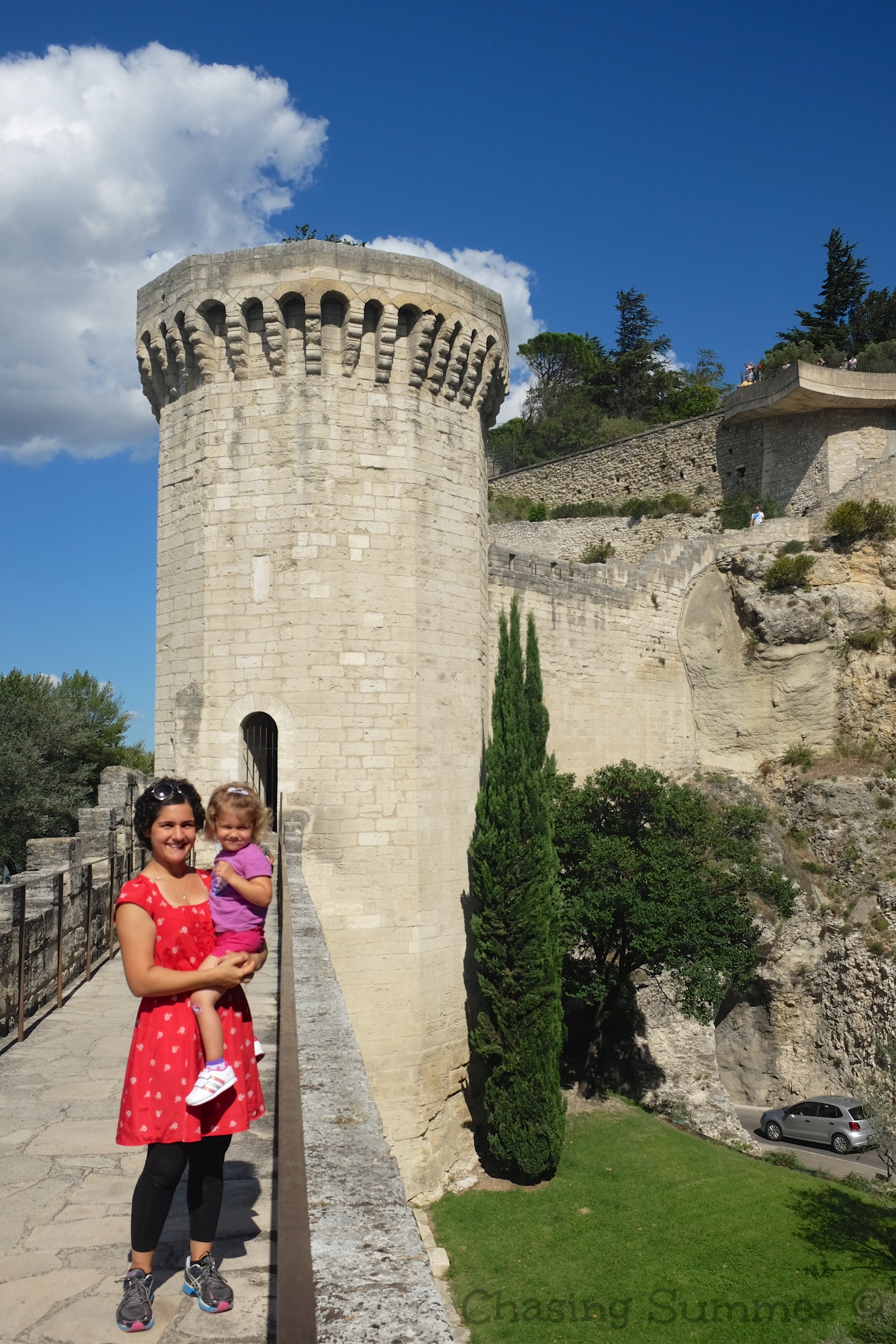
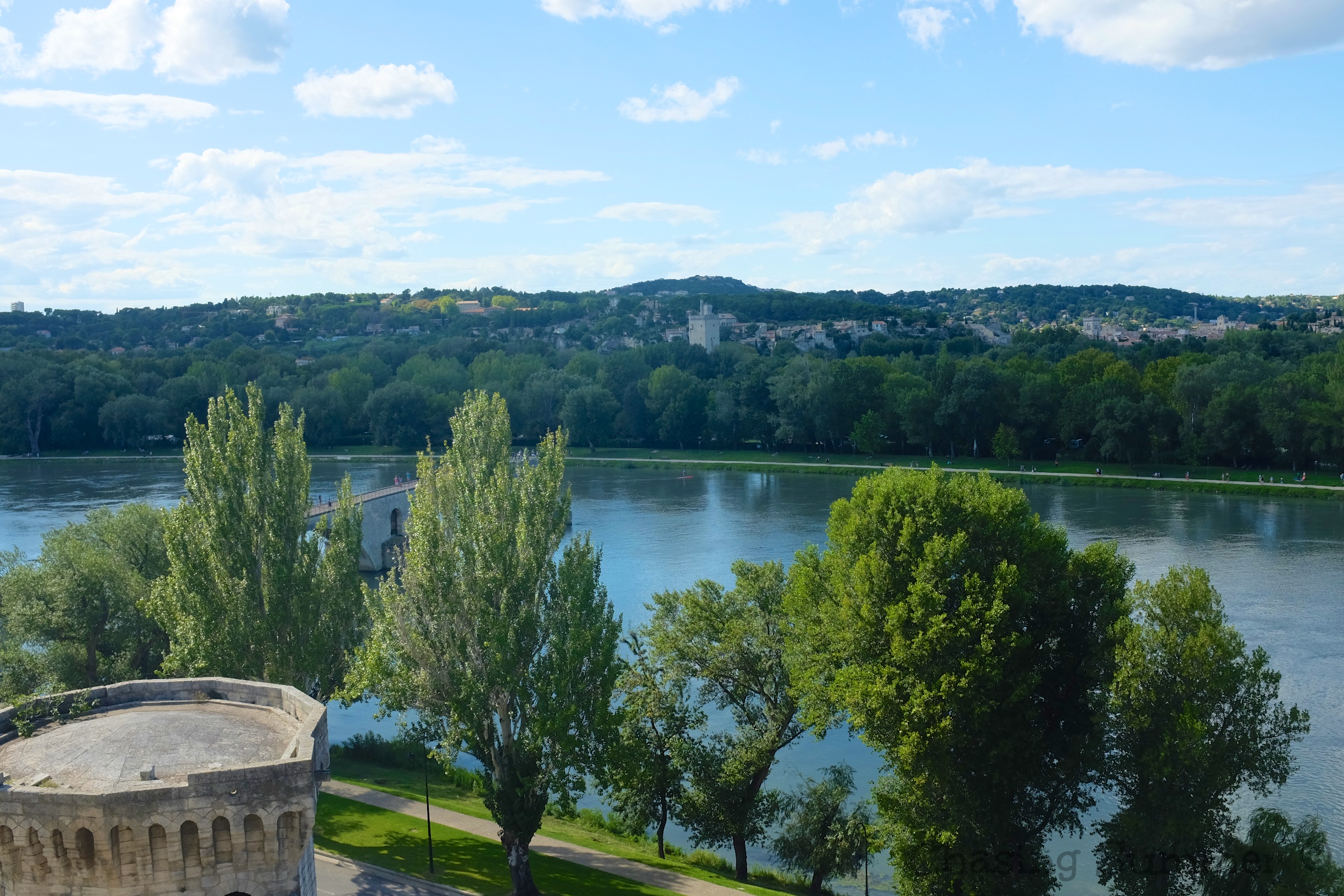
Avignon seems to have more charm and a much more lively spirit than Nimes. We will have to go back to explore the streets and the city center more another time.




